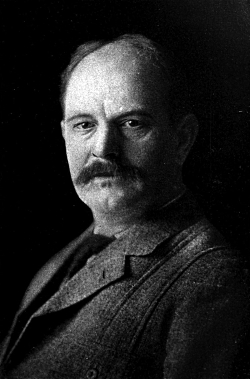
Haliaeetus leucocephalus
Courtesy US FWS
The Christmas Bird Count began on Christmas Day in the year 1900 when ornithologist Frank M. Chapman, an officer in the nascent Audubon Society, proposed a new holiday tradition—a “Christmas Bird Census” that would count birds during the holidays rather than slaughtering them, which had been the past ritual.
The data collected by observers over the past 116 years has allowed researchers to study the long-term health and status of bird populations across North America. When combined with other surveys such as the Breeding Bird Survey, it provides a picture of how the continent’s bird populations have changed in time and space. This long-term perspective is vital for conservationists. It informs strategists to better protect birds and their habitat and helps identify environmental issues, with implications for people as well.

Courtesy Wikimedia
Image in the public domain
Along with the fun it brings, the count has special significance for our changing climate’s impact on birds which is disrupting populations and their spatial distribution that are changing at an accelerating rate.
Audubon’s 2014 Climate Change Report is a comprehensive, first-of-its-kind study that predicts how climate change could affect the ranges of 588 North American birds. Of the bird species studied, more than half are likely to be in trouble. The models indicate that 314 species will lose more than half of their current range by 2080.
Audubon’s Climate Initiative, the organizational response to this threat, taps into its members’ love and commitment for birds to build population resilience and demand solutions to slow the pace of warming. Audubon is encouraging its members to take steps to address the climate change threat in their backyards and communities. Visit their website at audubon.org for how to take action.
The Environmental Protection Agency has included Audubon’s climate change work from CBC data as one of 26 indicators of climate change in their 2012 report.
In 2007, CBC data were instrumental in the development of Audubon’s Common Birds in Decline Report, which revealed that some of America’s most beloved and familiar birds have taken a nosedive over the past forty years.
142 species of concern are found in Utah including our state bird, the California gull and our national bald eagle. Averaging the most recent 10 years, our valley has seen 16 species increase and 11 species decline. Of course we would need a much broader sweep to know the true story of these species, but our data may play a significant part in the overall analysis.
And please, keep those bird feeders full as we enter the coldest month of the year!
This is Jack Greene for Wild About Utah.
Credits:
Image: Courtesy Wikimedia and in the public domain
Text: Jack Greene, Bridgerland Audubon Society
Additional Reading:
17 Dec, Cache Valley (Logan) Christmas Bird Count, Bridgerland Audubon Society, https://bridgerlandaudubon.org/our-projects/cache-valley-christmas-bird-count/

